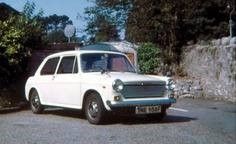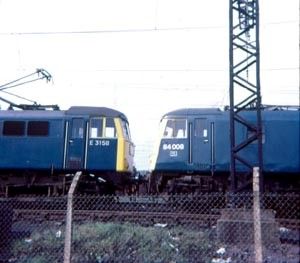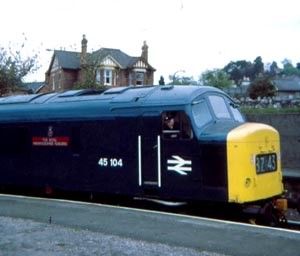A Lifetimes Hobby
A Lifetimes Hobby
58 Years of Railway Interest, by Steve Marshall. Last update 20-May-2016. All notebooks now added with images.
All text and images are copyright owned by Globe Video Films or the contributing photographer.
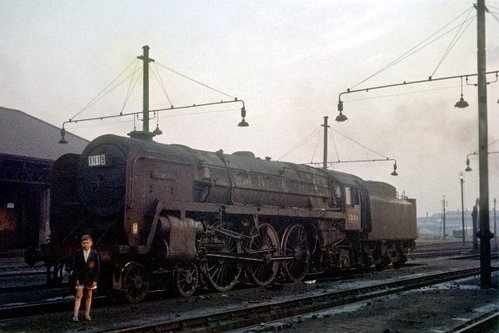
Britannia 70014 'Iron Duke' & me at Trafford Park around 1958. Photo Duncan Marshall
My interest in trains started around 1957 in Manchester, when I was 7 years old. My local station of Stretford was a three minute walk away but saw little more than the M&SJR electric units running from Manchester Oxford Road to Altrincham. I do, however, rember seeing the odd 8F 2-8-0 and 'Crab' 2-6-0 pass through with freights.
However, the substantial engine sheds at Trafford Park shed, Manchester (9E) were only a short bike ride away (see photo above) and this is where I spent much time before my family moved South to Paignton late in 1962.
Proper spotting records from 1957 to 1963 didn't really exist because my daily scribblings were discarded once locos were underlined in my Ian Allan ABC. A letter 'P' was written next to the engine if I was pulled by it and a 'C' if I cabbed it. The suffix 'R' for ridden in was required only very occasionally.
Daily sightings on shed at Trafford Park were Jubilees, Scots, Patriots, Brits, black 5s, Crab 2-6-0s, 8Fs, 9Fs, Stanier & Fowler tanks. It was the latter two types that used to pass Trafford Park on CLC trains to Warrington Central and Liverpool.
Diesels started to appear around 1959 with 'Peak' class diesels, D5000 (class 24), and Metrovicks (Class 28). I vividly remember D6 Whernside lurching across onto the double track shed approach roads at Trafford Park Jn next to the football ground. Class 45 and Class 46 Peaks appeared as well - see photographs in galleries.
Saturday trips to Crewe were frequent and always involved the challenge of getting around 5A Crewe North steam shed, sometimes several attempts were required. Plan 'A' was to brazenly walk stright across the footbridge at the north end of the station and into the shed, carefully avoiding the Foreman's office of course. If that failed then Plan B was brought into use which invloved a lengthy walk through Crewe side streets ending up by the high fence surrround to the coaling area of the shed. Miraculously, there was always someone who had previously burrowed under the cinder embankment supporting the fance and so access for a small boy this was relatively simple. 5B Crewe South and Gresty Lane subshed were also visited each trip, but were relatively simple to negotiate. Crewe Works was a massive walk from the station but never-the-less was undertaken many times, often in the faint hope of tagging onto a Works tour party. I think I was lucky only twice, but even without entering the Works one could see masses of locos, many ex-works, accumulating around the traverser are. Frustratingly, some numbers were only partly visible from our vantage point on the footbridge over the Chester line, so we would lean over the fence and shout to workmen pleading with them to read out the number of the offending loco. Amazingly they often entered into the spirit of the thing and duly obliged, even telling us the numbers of ones that we couldn't see, which of course was no use as at all!
For a perios of time around 1959 I regularly used the train from Manchester Central to make my way home from school which was in the middle of Manchester. The train was something like a 5pm Manchester-Buxton, and regularly had a Jubilee up front. I would alight at Chorlton-cum-Hardy and then make my way home to Stretford. It was far from the most direct route but definitely the most interesting. Amongst some of the engines I had on this train were 45600 'Bermuda', and 45690 'Leander'.
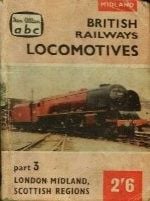
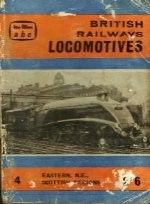
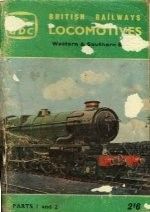
Moving with my parents to Paignton in November 1962 naturally brought about a massive change in the railway scene for me. The Western Region had already made great strides in intruducing dieselisation, and my daily diet of black 5s, Scots and Brits was instantly exchanged for diesel-hydraulics with the occasional Hall, Castle or Mugul. I still managed to travel to school by train though and the daily routine from November 1962 until the timetable change in June 1963 was the 08.30 Paignton-Kingswear to Churston with a class 22 on three coaches, returning to Paignton on the 16.10 Kingswear-Taunton, the latter being the last steam-hauled turn on the branch. As a cheeky 12 year old Northerner I was occasionally brave enough to ask the driver for a ride to Paignton and miracoulously this sometimes worked; thus rides in the cabs of ex-GW Halls 4904 Binnegar Hall and 6936 Breccles Hall were recorded from Churston to Paignton. Other locos that worked our school train in that period included 5081 Lockheed Hudson, 5992 Horton Hall, 7909 Hevingham Hall and Moguls 7304 & 7333. The outward train remained the same after that summer of 1963, with either class 22s, class 35 Hymeks or occasionally Warship diesels but the steam had gone forever - well until the Dart Valley Railway took over the line in 1973.
Despite my move to South to Devon in 1962, I frequently travelled back to Manchester with Mum & Dad to vist visit my relatives and occasionally I would even travel alone on the train (even better!) Trains were routed via the North & West route through Hereford in those days and worked by Warship diesels as far as Crewe.
Key to my 1960s notebook hyroglifics:
x = not copped: P or an engined in a frame (or both) means pulled by: Ph = photograph: s = for scrap (though I was less than methodical in noting an 's' all the time as by 1968 all steam were for scrap: ( ) Loco seen earlier on trip: 'B' or 'R' indicate blue or maroon livery. These were notable in the 1960s when most diesels wore green livery, and it's interesting to see how early some diesels gained BR blue livery. Finally, a tick followed by digit '2' would indicate needed for 2nd collection. Warships were, for example, so common, that when I saw the last one I would start again as though I hadn't seen any. I think I completed 13 collections of Warships! It helped to make life more interesting! This certainly applied to Warships, Westerns, Peaks & Brush type 4s.
From 1975 onwards you will be pleased to learn that my notekeeping became more than just a list of numbers, especially when I started to concentrate on the haulage side of the hobby, and during notebook No.5 (1976-77) two letter station codes were introduced, so as to give more detailed of train workings. Most of these will be pretty obvious but should anyone require a full list please email me: [email protected]
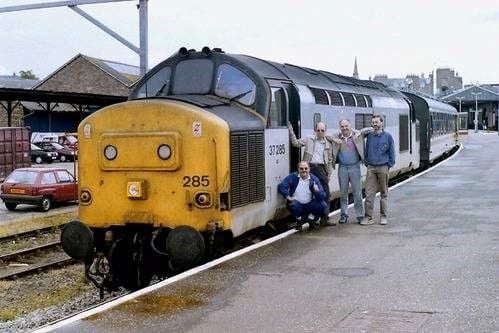
Anyway - after that long preamble - I'm attempting to list scans from my notebooks from December 1963 onwards.
Scans from notebooks
Simply illustrating all 2000+ individually scanned pages of my 20 notebooks , even with supporting photographs, could produce a mind-numbing sensation, having said that, my early 1960s-1970s notes are now nearly 40+ years old, so we'll start with complete records & see how it goes.
Book 1:
30 December 1963 - 16 April 1965
It seemed strange to have moved from Manchester, where steam was commonplace, to the South-West where it was a rarity. 22nd November 1962 was the date of my move to Paignton. Steam was on it's last legs and the NBL D63xx class 22 diesels and Warship diesels worked most hauled services. I regularly had day trips to Plymouth, walking or bussing to Laira depot, but I remember vividly one occasion passing Laira on the way to Plymouth and in the distance caught sight of a wonderfully handsome cream liveried diesel locomotive. Snow was thick on the ground so buses were out of the question. I arrived at Laira about 45 minutes later to behold the magnificence of D1000 Western Enterprise in desert sand livery - what an absolutely awesome design!
I'm guessing the date of this was December 1962 because of the thick lying snow, but record taking was only in rough notebooks at this point. Laira steam shed was still open (just) but the sight of D1000 had gone a long way to maiking up for the decimation of steam on the Western Region.
Information technology for a 12 year old in 1962 was not what it is now and spotting was very hit and miss. In truth this made it more exciting. Local spotters at Newton Abbot told stories of having seen not only D1000, but even mention of a green Western being seen, though but I could determine no pattern that would help me get another glimpse of these machines. And so it was, a few weeks later one Sunday afternoon on Newton Abbot platform watching Warships, D6300s and the occasional Hymek perform, when in rolled an up Paddington train into the (then) Platform 7/8 with D1007 Western Talisman in charge - and this was in gleaming maroon livery. What a sight! Even better was to follow in a few weeks when returning from my regular trips to Laira. My train back to Newton Abbot from Plymouth stood in North Road station with no locomotive attached - that is until D1048 Western Lady backed onto the stock. I leaned out of the front window all the way to Newton Abbot. Some time later I remember my first sighting on the branch with D1043 Western Duke crossing Paignton Sands Road crossing light engine. Soon Newton Abbot would have it's own allocation of one - D1057 Western Chieftain.
Other highlights in this period:
* 30-Dec-63 Visit to Crewe, including a guided trip around the Works. NB Class 47s & 52 under construction.
* 31-Mar-64 The Paignton to Manchester journey with D827 to Bristol, D824 to Crewe, then E3100 to Piccadilly.
* 8-Apr-64 My only rip to Birmingham Snow Hill in steam days.
* 11-Apr-64 The return trip home on the Manchester-Plymouth train has Patriot 45534 E Tootal Broadhurst piloted by E3052 to Crewe, unknown power to Bristol & D824 Highflyer to Newton Abbot.
* 20 to 24-Aug-64 Bought a great value North-West Rover giving unlimited travel Manchester-Carlisle-Newcastle-York-Manchester. At age 14 this seemed like a taste of freedom at last! Newcastle & York were brilliant with A1s, A3s, Claytons, Deltics etc but I must have picked a particularly quiet time at Carlisle and chickened out of the long walk to Kingmoor shed. That was probably a bad decision, but after an hour of sitting on a postal barrow, D21 rolled in heading for Leeds via the S&C it and was too tempting to let it go.
* 25-Aug-64 Travelled from Manchester to Criccieth with 42282 out & back from Bangor to Afon Wen, with 3208 and 82034 covering the Criccieth legs out and back.
* 13-Mar-65 School trip on the 1X05 01:35 Paignton-Gatwick Airport has D822 Hercules throughout. I seem to have omitted the return journey but my memory tells me it was the same Warship back 2 weeks later (coincidence or bad memory?)
Exeter soon overtook Plymouth as the the destination of choice for spotting trips. Plymouth had Laira and North Road station which produced loco changes for Cornish trains (often a D600 Warship or 2 x D6300s taking over from a D800 Warship). Also there was Southern steam. mostly Bulleid Pacifics. But I had soon seen all the D600s and the same Southern Pacifics could be seen at Exeter. I remember one day visiting both destinations diesel-hauled Paignton to Plymouth and Exeter to Paignton, but for a change I travelled direct from Plymouth to Exeter and when 34110 66 Squadron rolled in on Southern stock on a Waterloo train I decided to hop on. This turned out to be my only trip over the now closed route via Tavistock and Okehampton.
Days at Exeter were not generally spent on St Davids station. It was more fun to travel up to Exeter Central on a Waterloo train - sometimes with two banking engines on the back - and then take a local Exmouth service to Polsloe Bridge Halt with an Ivatt 2-6-2 or an 80000 Standard tank, from where I would wander across to 72A Exmouth Jn depot. I regularly used to sit on the workmens bench near the coaling point and just watch the loco movements for hours on end. Not once was I asked to leave!
Book 2:
20 April 1965 - 30 July 1966
Now that I was settled in Paignton many Summer Saturdays were spent sitting on the wall by Paignton South Box accompanied by Arthur Lamble, waiting for the Old Oak Hymek on the Oxford-Paignton, or in the hope that a Brush type 4 would turn up on an inter-regional; - or we would take a trip by train to Newton Abbot so that the Plymouth & Cornwall trains could be viewed. Also there was the walk around Newton Abbot engine sheds which I must have bashed 100s of times. Arthur and I had literally hundreds of trips to Exeter, Plymouth and other destinations by train, and there was a bit of competition to clear our 'Warships' & 'Westerns' for haulage. My last Warship was D838 Rapid; Arthurs' just missed one - D802 Formidable which always seemed a rare one. My last Western was D1061 Western Envoy but Arthur was unlucky enough again to miss one which miffed him severely. Surprisingly it was D1000 Western Enterprise, a long time Laira resident, whereas the rare ones until later years were always the Cardiff Canton (86A) or Swansea Landore (87E) ones with the batch from D1060 to D1067 seeming particularly difficult (excluding D1065).
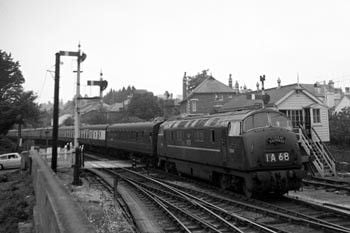
Book 3:
2 August 1966 - 9 August 1967
The All-Line Railrover of August 1966 was undoubtedly the highlight of 1966 and I had vowed to travel to Scotland chasing a second run behind an A4 locomotive after that exhillerating run behind 60030 Golden Fleece in the early 60s. Naturally, up-to-date information was harder to acquire in those days, indeed 'gen' was usually obtained from monthly issue of 'The Railway Magazine'. Unfortunately their reports of A4s being regular power for the famed 17:30 Glasgow Buchanan Street to Aberdeen express wer out of date by the time I turned up at Buchanan Street on Thursday 11 August 1966. Instead I found not an A4 at the head of my train but a type 2 diesel D6101. On the subsequent journey to Aberdeen (via Forfar?) I witnessed several A4s on shed at Perth and Aberdeen Ferryhill but remember none hauling trains I visied Aberdeen Ferryhill shed around 11pm that night and found 60009 Union of South Africa residing, then after a night spent on Aberdeen platforms, watching D3933 and D3935 shunting fish wagons in the yard I decided to cut my losses and head straight back south. From memory, it was the 05:30 departure to Glasgow Buchanan Streer, but the locomotive I do remember - D6101 again ! And so I never acquire another A4 run on the mainline, well not until 2003 anyway which wasn't quite the same!
Book 4:
10 August 1967 - 10 February 1973
Football, 'Led Zeppelin', and girls start to interfere with all my enjoyment! However following Torquay Utd and Manchester Utd around the country gave me the opportunity to travel cheaply on supporters club outings. Hence many coach trips to football 'away' games when I would combine watching the game with shed bashing.
When I got my first car in January 1970 there was no stopping me and my Austin Mini 427 LOD and Morris 1100 TME958F and both toured the whole of England, Wales and Scotland several times.
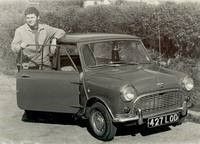
However in 1973, a fly flew into the ointment! B.R. had started to renumber almost it's entire fleet of it's diesel and electric locomotives. This involved the allocation of a 5 digit serial number for use by TOPS, a computerised control and management system. Suddenly, those familiar or favourite locomotives became anonymous, only identifiable by reference to conversion in books or magazines. For example D1883 of Thornaby - my last Class 47 - became 47 364. Worse was to follow as renumbering of some already renumbered locomotives was undertaken. This diminished my enjoyment of the hobby and as it coincided with my becoming engaged, the hobby was put on hold; so much so that 1974 was almost a non-entity. However, my honeymoon in Wales of March 1975 happened to include a visit to Holyhead shed, and in August 1975, when my new father-in-law casually mentioned that his Austin A40 needed 'a good run' because it sat around all day, I manged to borrow it for a trip to Scottish railway installations and even visited John'O Groats. Strangely my wife preferred the sights in the Scottish Highlands to Grangemouth engine shed - there's no accounting for taste is there!
84007 & E3158 at Longsight 23-Apr-73 45104 (Ex-D59) at Newton Abbot 12-May-73

Book 5:
6 December 1975 - 17 March 1977
1976 was really the time when I re-entered the hobby, prompted by a chance conversation with Mike Rowe, a work colleague who also, it appeared, was also a train nut. We travelled and photographed together for many years but were both shocked to find that less than half of our beloved Westerns were in traffic by the time we returned to the hobby. To compound that, there were only half a dozen Hymeks still left in service at 1st Jan 76. I had been aware that the D6300s had gone and saw the first withdrawal of Warships & Hymeks but to find the Westerns disappearing was a big shock, and so photographing the survivors was a priority. By the summer of 76 we had both started to mix photography with locomotive haulage - ie boarding a train simply because of what was pulling it, as opposed to using it as a service to get from A to B. This was much more challenging because many diesels were nominally freight only locomotives, having no train heating equipment for passenger stock. However, in the summer months, or in emergencies, these freight locomotives could be acquired - if you were in the right place at the right time! This meant that having the 'gen' became more and more important. Summer outings were mainly kept to my Devon locality because the 'Western' class 52 diesels were still around in some numbers and class 25s were booked for the Exeter stoppers. Winter trips were aimed at Birmingham & Crewe, prompted by special cut price tickets on Saturdays at that time - £3.15 day return I believe from memory.
February 26th 1977 of course was the end for the Westerns with the final special from Paddington-Swansea-Plymouth-Paddington. Neither Mike nor I have ever much liked railtours and prefer to remember things as they used to be so we decided to photograph the final special at Newton Abbot on the down road, then Plymouth station for their final departure in darkness - see photo below. I went to Laira shed that night to photograph D1010 & D1048 in the running shed. These had been the back up locos following the tour westwards but staying at Laira for withdrawal. However what is not generally known is that there was a Western Working under power on the mainline in March 1977, for whilst driving home past Aller, Newton Abbot. on Tuesday 1st March, I glanced over to the Plymouth line in amazement to see the sight of not one, but three Westerns dropping down towards Aller Jn heading for Newton Abbot. I did a hairy U turn in my Ford Escort and dashed to Newton Abbot just in time to see D1013+D1010+D1048 just coming to a halt in the the old steam shed which was by now roofless. The photo included below was bagged as proof.
My notekeeping also became much more comprehensive from this period and a new code of general abbreviations was adopted from 1975 onwards to indicate type of loco operation where the headcode is not shown: A = Troop train; B = Breakdown train; C = Motorail; D = Depot or loco sidings; E = Empty stock train; F = Freight train; L = Light engine; M = Mail train; P = Passenger train; S = Station area; T = Permanent way train; V = Parcels; X = Freightliner; Y = Yard; Z = Footex.
A black frame around a loco number means not new for haulage, a red frame indicates first time haulage.
It also coincided with a great improvement in my record keeping, in that ALL LOCOMOTIVES were now recorded.
Book 6:
20 March 1977 - 20 July 1977
With the last of the diesel-hydraulics withdrawn, it was time to concentrate on other favourite types, particularly the Class 40s which I had grown up with in Manchester, but had ridden behind on only a few occasions.
I had a hankering to visit Scotland and so 1977 started in great style with a drive from Torbay to Edinburgh in my Ford Escort XXF491M for a Haymarket based 7-day Freedom of Scotland rover, accompanied by Gill, my wife, and Mike Rowe. Steam-heat was still in regular use with class 25/26/27/40 or 47s on most services. We stuck mainly to Fife trains the central corridor rather than the West Highlands, simply because there were so many interesting locomotives in use on so many trains in this area. To spend long periods on one train seemed too much wasted time. However 22nd March was my wedding anniversary, so on Tuesday 22-Mar-77 I had to comply when Gill needed the sweetner of a long trip to Inverness using the restaurant car from Perth. Utilising the 09.10 Edinburgh-Inverness, we set behind 26046 to Perth, where our coaches would be added to the 09.35 Glasgow-Inverness. I dreaded a class 47 on the latter but needn't have worried as 40123 rolled in on the Glasgow portion bound for Inverness.

